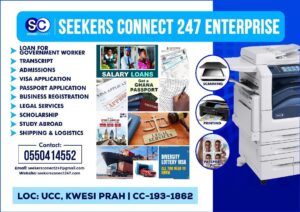
Metalwork: A Comprehensive Guide to Skills and Techniques
Table of Contents
Introduction
Metalwork is a foundational skill in engineering and manufacturing, covering material properties, fabrication techniques, and safety protocols. This guide breaks down core competencies, tools, and processes for learners and professionals.
Content Areas & Competencies
1. Materials
Competencies:
-
Differentiate ferrous (iron-based) vs. non-ferrous metals.
-
Explain alloys (brass, bronze, solder).
-
Describe properties and uses of metals (steel, aluminum, copper).
Key Topics:
✔ Steel types (mild, carbon, stainless)
✔ Non-ferrous metals (zinc, lead, tin)
✔ Alloy compositions and applications
2. Safety
Competencies:
-
Follow workshop safety protocols.
-
Use tools and materials safely.
Key Topics:
✔ Accident prevention
✔ Hazardous material handling
✔ Machine tool safety
3. Tools
Competencies:
-
Identify measuring, marking, cutting, and holding tools.
-
Demonstrate basic manipulative skills.
Key Tools:
✔ Calipers, scribers, hacksaws
✔ Vices, clamps, chisels
4. Bench Work
Competencies:
-
Perform cutting, filing, threading, and chiseling.
Key Processes:
✔ Internal/external thread cutting
✔ Sheet metal sizing
✔ Hacksaw types and uses
5. Manufacturing Processes
Competencies:
-
Understand forging, sand casting, and die casting.
-
Identify casting defects.
Key Terms:
✔ Pattern preparation
✔ Melting/pouring equipment
6. Machine Tools & Processes
Competencies:
-
Operate lathes, milling machines, and grinders.
Key Machines:
✔ Power drills, grinding machines
7. Joining Processes
Competencies:
-
Compare arc vs. gas welding.
-
Apply soldering, brazing, and fastening.
Key Topics:
✔ Welding hazards (arc eye, fumes)
✔ Riveting faults and fixes
8. Heat Treatment
Competencies:
-
Explain annealing, hardening, and tempering.
-
Perform case hardening.
Key Processes:
✔ Stress relieving
✔ Quenchant selection
9. Plastics
Competencies:
-
Differentiate thermoplastics vs. thermosetting.
-
Demonstrate injection molding.
10. Finishes
Competencies:
-
Apply electroplating, galvanizing, and bluing.
Key Terms:
✔ Surface preparation
✔ Corrosion resistance
Assessment Breakdown
Cognitive Levels Weighting:
| Content Area | Recall (15%) | Skill (25%) | Strategic Thinking (30%) | Extended Thinking (30%) | Total |
|---|---|---|---|---|---|
| Materials | 1 | 2 | 3 | 3 | 9% |
| Manufacturing Processes | 2 | 4 | 4 | 4 | 14% |
| Joining Processes | 2 | 4 | 4 | 4 | 14% |
| Heat Treatment | 2 | 2 | 2 | 3 | 9% |
| Total | 15% | 25% | 30% | 30% | 100% |
Key Takeaways
-
Highest weightings: Manufacturing, Joining, and Machine Tools (14% each).
-
60% of the assessment focuses on applied and critical thinking (Levels 3 & 4).
-
Safety and material knowledge are foundational (Levels 1 & 2).
Practical Tips:
-
Practice welding and casting in supervised workshops.
-
Use flowcharts to compare heat treatment processes.
-
Memorize tool types with flashcards.
For the past question, click here: https://ntc.gov.gh/practice_test/metal_work/
Follow us on WhatsApp for more updates: https://whatsapp.com/channel/0029VaCyYGIFHWpx22L38a2K
Seekers Consult
Contact Us for Your Study Abroad Journey
We search for schools and check available scholarships for you
Contact: 0550414552 / 0362297079
Loan for government workers
Transcript Application
English Proficiency
Recommendation letter
Project work/thesis for undergraduate, master’s, and PhD students.





